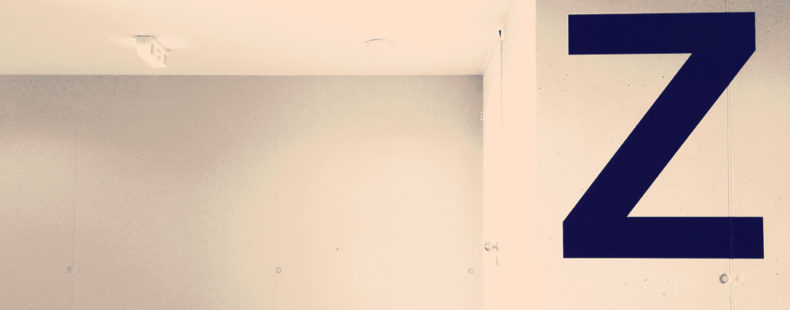Poor lonely Z finishes up the alphabet at number 26. But, that’s not the only insult this lonely letter suffers!Z’s history includes a time when it was so infrequently used that it was removed from the alphabet altogether.
Where did Z come from?
The Greek zeta is the origin of the humble Z. The Phoenician glyph zayin, meaning “weapon,” had a long vertical line capped at both ends with shorter horizontal lines and looked very much like a modern capital I.
By the time it evolved into the Greek zeta, the top and bottom lines had become elongated, and the vertical line slanted, connecting to the horizontal lines at the top right and the bottom left.
It finally looked like what we call Z today.
Why did Z get removed from the alphabet?
Around 300 BC, the Roman Censor Appius Claudius Caecus removed Z from the alphabet. His justification was that Z had become archaic: the pronunciation of /z/ had become /r/ by a process called rhotacism, rendering the letter Z useless.
At the same time, S was also removed, and G was added … but that’s another story.
How did Z get added back?
Clearly there’s good news for all the zebras and zither lovers out there, though. Z made its way back to the alphabet so kids could learn an alphabet that stretched all the way from A to Z.
Two hundred years after Appius Claudius Caecus was giving the letter the boot, Z was reintroduced to the Latin alphabet. At the time, it was used only in words taken from Greek. Because of its absence and reintroduction, zeta is one of the only two letters to enter the Latin alphabet directly from Greek and not Etruscan.
What about the 27th letter?
Z was not always the final letter of the modern English alphabet, although it has always been in the 26th position. For years the & symbol (now known as the ampersand) was the final, pronounced “and” but recited with the Latin “per se,” meaning “by itself.” The position and pronunciation eventually ran together: “X, Y, Z, and per se and” became “X, Y, Z, ampersand.”
These days Z is the most rarely used letter in the alphabet; however, American English uses it more often than British English.
Early English—it should be noted—did not have a Z but used S for both voiced and unvoiced sibilants. Words in English that originated as loanwords from French and Latin are more likely to be spelled with a Z than an S, such as blazon or buzzard. Also, American standardization modified /z/ suffixes to more accurately reflect their pronunciation, changing –ise and –isation to –ize and –ization.
We’ve covered the end of the alphabet, so let’s jump to the beginning: Not only did the letter A once look different, but it sounded different as well.














